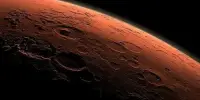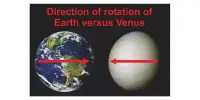Enceladus, one of Saturn’s moons, is known to have water ice geysers erupting from its surface. Cassini, NASA’s spacecraft that was active until 2017, made extensive observations of these plumes. Enceladus’ geysers are composed of water vapor, icy particles, and other organic molecules that erupt from fractures near its south pole. These findings suggested that Enceladus may have a subsurface ocean, making it an intriguing target for future missions.
Scientists have discovered a 6,000-mile-long plume of water vapor spewing from the surface of Saturn’s moon Enceladus, roughly the distance between the United States and Japan.
Two Southwest Research Institute scientists were part of a James Webb Space Telescope (JWST) team that observed a towering plume of water vapor spewing from the surface of Saturn’s moon, Enceladus, that was more than 6,000 miles long – roughly the distance between the United States and Japan. Dr. Christopher Glein of SwRI received a Cycle 2 allocation as a result of this NASA JWST Cycle 1 discovery to study the plume as well as key chemical compounds on the surface, in order to better understand the potential habitability of this ocean world.
The Cassini spacecraft discovered Enceladus has a subsurface ocean of liquid water during its 13-year exploration of the Saturn system, and Cassini analyzed samples as plumes of ice grains and water vapor erupted into space from cracks in the moon’s icy surface.
The Webb observations, for the first time, are visually illustrating how the moon’s water vapor plumes are playing a role in the formation of the torus. This serves as a stunning testament to Webb’s extraordinary abilities. I’m thrilled to be part of the Cycle 2 team as we initiate our search for new indications of habitability and plume activity on Enceladus.
Dr. Silvia Protopapa
“Enceladus is one of the most dynamic objects in the solar system and a prime target in humanity’s search for life beyond Earth,” said Glein, an extraterrestrial oceanography expert. He is a co-author on a paper that was recently accepted for publication in Nature Astronomy. “In the years since NASA’s Cassini spacecraft first examined Enceladus, we have never stopped being amazed by what we discover is going on on this extraordinary moon.”
Once again, the latest observations made with Webb’s Near InfraRed Spectrograph have yielded remarkable results.
“When I was looking at the data, at first, I was thinking I had to be wrong, it was just so shocking to map a plume more than 20 times the diameter of the moon,” said Geronimo Villanueva of NASA’s Goddard Space Flight Center and lead author of the recent paper. “The plume extends far beyond what we could have imagined.”

Webb’s sensitivity reveals a new story about Enceladus and how it feeds the water supply for Saturn and its rings as a whole. Enceladus spews water as it races around the gas giant in just 33 hours, leaving a donut-like halo in its wake. Not only is the plume massive, but the water spreads across Saturn’s dense E-ring. According to JWST data, roughly 30% of the water remains in the moon’s wake, while the remaining 70% escapes to supply the rest of the Saturnian system.
“The Webb observations, for the first time, are visually illustrating how the moon’s water vapor plumes are playing a role in the formation of the torus,” said SwRI’s Dr. Silvia Protopapa, an expert in the compositional analysis of icy bodies in the solar system who was also on the Cycle 1 team. “This serves as a stunning testament to Webb’s extraordinary abilities. I’m thrilled to be part of the Cycle 2 team as we initiate our search for new indications of habitability and plume activity on Enceladus.”
Glein is leading the same team that will observe Enceladus again with JWST in the coming year, inspired by the incredible findings from Webb’s first fleeting glimpse of Enceladus.
“We’ll look for specific indicators of habitability, like organic signatures and hydrogen peroxide,” Glein explained. “Hydrogen peroxide is especially intriguing because it has the potential to provide much more potent sources of metabolic energy than what we previously identified.” Cassini did not provide a definitive answer on the availability of such powerful oxidants on Enceladus.”
By increasing the signal-to-noise ratio by up to a factor of ten compared to Cycle 1, the new observations will provide the best remote opportunity to search for habitability indicators on the surface. Understanding the time variability of plume out-gassing is also important to plan for future planetary science missions that target the plume.
















